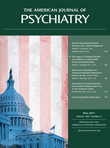In recognition of the fact that attention deficit hyperactivity disorder (ADHD) is a complex disorder, with the co-occurrence of other psychiatric disorders being among the most challenging complications, this textbook provides a comprehensive review of how ADHD relates to other disorders and how this interaction can be effectively recognized and treated. In addition, the book provides updated information about developmental aspects of ADHD not current in its preceding volume (Attention-Deficit Disorders and Comorbidities in Children, Adolescents, and Adults, published in 2000). To my knowledge, there are few definitive textbooks that cover this clinical disorder over the life span and provide a developmental context for its various presentations over time. Moreover, phenomenological descriptions are not limited to DSM criteria but rather integrated with the rich knowledge gained about this disorder from the field of neuroscience. After establishing the developmental complexities, genetics, and common presentations of ADHD from preschool to adulthood, the body of the book focuses on the co-occurrence of the disorder with a variety of psychiatric syndromes, including mood and anxiety disorders, oppositionality and aggression, obsessive-compulsive disorders, language and learning disorders, substance use disorders, autism spectrum disorders, developmental coordination disorder, sleep disturbances, and Tourette's syndrome. This thematic organization is helpful not only to a clinician but also to educators and laypersons, who might observe attentional problems manifested in a variety of different contexts outside of a clinical setting.
Compared with the earlier edition of this book, interim knowledge has suggested conceptual models of ADHD that embrace its heterogeneity among individuals and its susceptibility to change across development and environmental variations. In addition, ADHD is no longer considered simply a disorder of executive function as defined by neuropsychological tests but rather a complex syndrome of impairments across multiple overlapping cognitive operations, including motivation and emotion regulation. This book also makes the point that whereas early studies cautioned against the use of psychostimulant therapy for individuals with ADHD and comorbid conditions such as mood or anxiety disorders, recent literature suggests that many patients may in fact benefit from such treatment. This new framework is illustrative of the contemporary view that individual patients rarely have symptoms that fit neatly into unified diagnostic groups. Moreover, treatment should be tailored to target overlapping symptoms and dimensional features and should incorporate pertinent sources of stress and support. Although controversies abound regarding the diagnosis and treatment of highly comorbid conditions such as ADHD, DSM-5 work groups are being challenged to consider alternative views of psychiatric diagnoses that incorporate these types of complexities. In this way, this textbook will prove to be an excellent compendium to the DSM, focused specifically on attentional dysfunction and related disorders.
As a child psychiatrist and pediatrician, I found myself drawn to the case vignettes, information about clinical course with complicated ADHD, and treatment recommendations. Each chapter ends with key clinical bullets, recommended readings, and Internet resources, all useful tools for a busy clinician. The chapters at the end of the book provide another level of guidance on the assessment and intervention of ADHD, synthesizing special considerations described in the preceding chapters. It would be nice to see more speculation on gaps in current knowledge and what kind of study designs will help advance research in this field. For example, although much has been learned in the past decade about the benefits of certain medications and behavioral approaches for the treatment of ADHD from the Preschool ADHD Treatment Study, the Multimodal Treatment Study of Children with ADHD, and the National Comorbidity Survey Replication, few studies have helped us optimize treatments and outcomes for individuals with predominantly ADHD inattentive type, familial ADHD, or ADHD as a result of a perinatal developmental insult (e.g., fetal alcohol syndrome). If advancements in the past decade are any indication of the trajectory of knowledge gained in this field, I look forward to the next generation of studies that will provide even greater levels of sophistication in the evaluation and treatment of ADHD.

